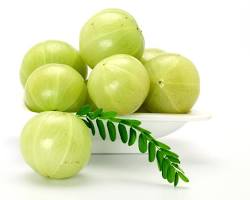
Amla (Indian Gooseberry): Nature’s Vitamin C Powerhouse
Looking for a natural vitamin C powerhouse? Amla fruit (Emblica/Phyllanthus emblica), also known as Indian Gooseberry, is among the richest natural sources of vitamin C and long used in Ayurveda. This guide covers what it is, realistic vitamin C numbers, benefits, and how to use it — with primary sources linked.
What is Amla Fruit?
A small, pale-green drupe native to India and Southeast Asia, Amla is dense in polyphenols and vitamin C and has featured in traditional formulas for centuries.
Amla’s Vitamin C Content: By the Numbers
- Typical vitamin C content ranges roughly 200–900 mg per 100 g fresh fruit depending on variety and processing (Alkandari 2019 ; Suman 2014 ; Govindarajan 2023).
- Per fruit values vary by size, but a 100 g portion can readily exceed the adult RDA for vitamin C (WebMD nutrition overview).
- Stability: Heat and drying reduce vitamin C, but pre-treatments (e.g., blanching, pasteurization) and Amla’s polyphenols/tannins can help retain vitamin C relative to many fruits (Verma 2004 ; Suman 2014 ; Govindarajan 2023).
Why Amla’s Vitamin C is Special
Amla provides vitamin C alongside polyphenols (including tannins) that can limit oxidative loss and may aid bioavailability during processing and storage (Gul 2022 review ; Alkandari 2019).
Health Benefits Linked to Amla / Vitamin C
- Cardiometabolic & antioxidant support: In a randomized, double-blind trial, standardized Amla extract improved endothelial function and reduced oxidative stress in overweight adults (Kapoor 2019).
- Iron absorption synergy: High ascorbic acid in Amla enhances non-heme iron bioavailability from meals (Gowri 2001).
- Dermal matrix support (preclinical): Amla extract stimulated procollagen and inhibited MMP-1 in human skin fibroblasts (Fujii 2008).
How to Include Amla in Your Diet
Fresh Amla
- Eat raw (traditional), add to smoothies, or juice fresh.
Dried Amla
- Use powder, dried whole fruit, or minimally sugared pieces; store airtight.
Supplements
- Capsules/tablets/extracts — follow label dosing; choose products that declare vitamin C content and standardization.
Recommended Intake (Practical)
- Fresh fruit: 1 small serving (e.g., 50–100 g) as tolerated.
- Powder: common culinary amounts ~1–2 tsp (check labeled vitamin C per serving).
- Supplements: follow manufacturer’s directions.
Potential Side Effects & Precautions
- May interact with medications or affect blood sugar; excess can aggravate reflux. Pregnant/nursing: consult a clinician.
References (Direct Links)
Vitamin C range and processing: Alkandari 2019 (Food Sci. Nutr.) ; Suman 2014 (CABI chapter PDF) ; Govindarajan 2023 (Indian J. Nutr. Dietetics) ; drying/heat effects Verma 2004 (J Food Eng.).
Broad review of Amla antioxidants & nutrition: Gul 2022 (Front. Nutr.).
Human RCT (endothelial function, oxidative stress): Kapoor 2019 (Nutrients).
Iron bioavailability with Amla: Gowri 2001 (Nutr Res.).
Skin fibroblasts (procollagen/MMP-1): Fujii 2008 (J Ethnopharmacol.).
